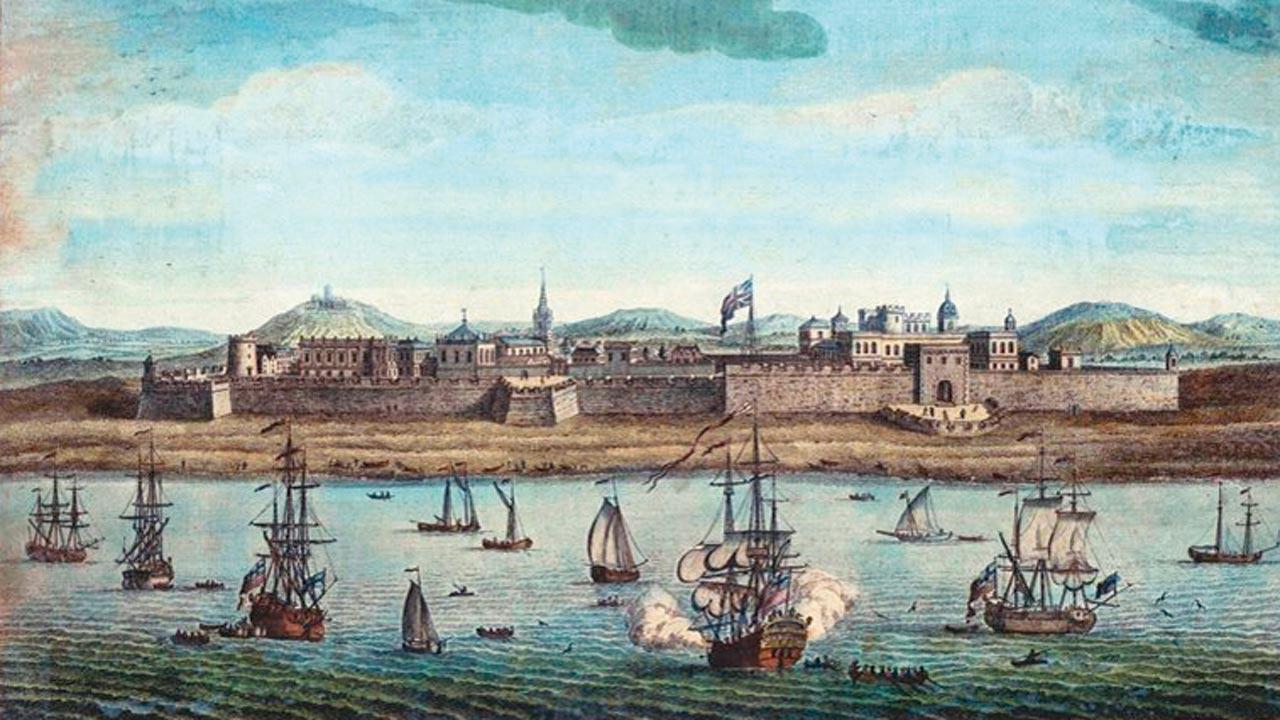Academic Brinda Charry’s novel takes two East Indians who migrated to the West as far back as the 1600s, and weaves fiction around available facts

An etching of Fort St George in what was then Armagon by Jan Van Ryne (1712-60). Pic Courtesy/Rare Books Society of India
Juggling recorded history with fiction is a daunting task that some authors have shied away from, and others have tried and failed. The fascinating premise of Brinda Charry’s latest novel, The East Indian (HarperCollins India), aims to achieve this tightrope walk. The book traces the journey of the central character, simply called Tony, from Armagon in the Coromandel Coast, to the United Kingdom and from there to the United States of America. She says that he is an amalgamation of two persons who existed. One of them was the first East Indian to travel to America and the other apprenticed as an apothecary in London.
ADVERTISEMENT
“In fact, little is known about the lives of these two individuals or any of the Indians who came to colonial America. I imagined much of his story, but worked within the realm of the possible—that is, nothing that happens to him is unrealistic. The construction of the life was challenging; I needed to write a narrative that was informed by the historical realities of the period, and that took a lot of reading and research. The character itself came easily to me—I wanted to track a life that takes on a big, dramatic turn more than once, very much against the character’s will, but who retains the spirit to survive and thrive, to find home, love and happiness,” says Charry, clearly still immersed in the character she has created.
The historical influence on the story, too, is hardly insignificant. What was called Armagon in the 1600s—when the story is set—is now known as Durgajapatnam in Andhra Pradesh. It was an East India Company settlement for 14 years, founded by the same Francis Day, the Factor at Armagon who would later go on to become the co-founder of Madras. Interestingly, Day makes an appearance in the story and is a patron of Tony’s courtesan mother, who encourages him to travel abroad when she passes away. It is this that sets Tony on a perilous journey; he sets off for London, gets kidnapped and put on a boat to America. Again, an important historical figure makes an appearance in the story—the son of Native American princess Pocahontas.
 Brinda Charry
Brinda Charry
“But,” Charry says, “these are minor figures in the story. I picked up on one or two things I learned about them and made up the rest; again, always staying within the realm of the possible.”
Nevertheless, seamlessly combining her research with the story was tough, Charry says. “Because it is such a global novel, I had to become familiar with multiple spaces. I read up on the East India Company’s doings in South India, on the Indians living in London in the 1600s. I knew very little about colonial Virginia—much of my research was about society, culture and politics of Virginia between 1600-1650. I also had to confirm that Tony did, in fact, exist. The other area I brushed up on was medicine as it was practiced in England and America during the time.”
The research took her a couple of years, but the novelist-academic says she enjoyed it.
“The important thing, though, is to remember, you are writing a novel—you don’t put everything you’ve learned into the story. You are not writing a history book, and you don’t dump information.”
Charry’s reason to choose this subject comes from a deeply personal place.
“I am an immigrant from India to the United States. I felt I had nothing new to contribute to the tradition of the modern immigrant experience novel. I then found out about the East Indians in colonial America. Someone like Tony came here not too long after the English settlers. I found that amazing,” Charry says, in wonderment about how far our roots stretch. When it came to the East Indian settlers, even professional historians seem to know very little. “For me, they are reminders of the vast, complex global networks that were already falling into place in the 1600s and how individual lives were impacted by historical changes, sometimes swept by them.”
 Subscribe today by clicking the link and stay updated with the latest news!" Click here!
Subscribe today by clicking the link and stay updated with the latest news!" Click here!







